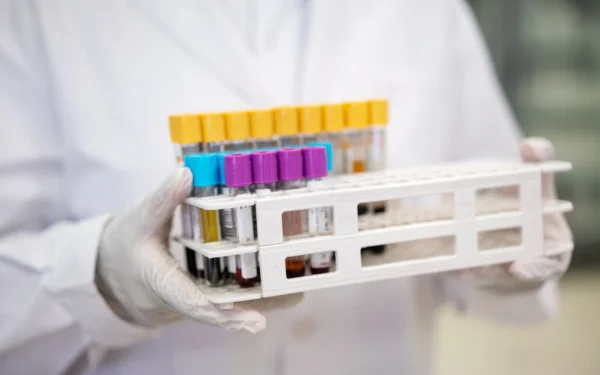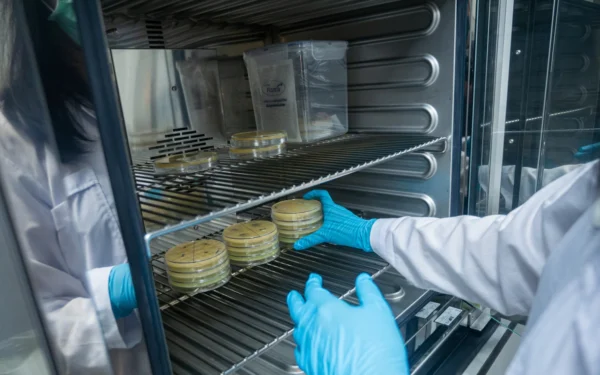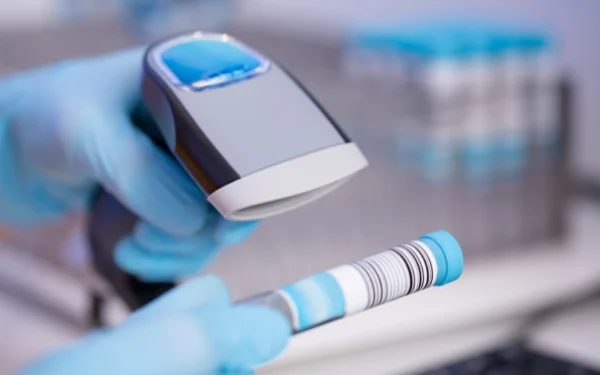Biopharma R&D increasingly spans multiple sites and time zones, enabling faster workflows, broader expertise, and global partnerships. However, this distributed model also introduces risk: variations in labeling, storage, or chain-of-custody protocols can compromise data integrity and reduce confidence in results.
Establishing standardized procedures for sample collection, preparation, and management across multiple sites helps maintain sample integrity and improves the reproducibility of studies. With the help of modern informatics tools designed for robust sample management, your biopharmaceutical R&D teams can generate more reliable data to guide critical scientific decisions.
Why is standardized sample handling essential for labs?
Whether samples are processed for discovery, clinical laboratory tests, or clinical chemistry applications, standardization minimizes procedural variation and reduces the risk of compromised experimental outcomes. Errors such as mislabeled vials, repeated freeze–thaw cycles of biological samples, or inconsistent metadata can create uncertainty in endpoints and delay downstream processing during sample handoffs between teams. Improper storage or environmental factors, such as humidity or temperature, can also cause rapid degradation and limit sample utility for clinical research or broader public health applications.
When working with biological samples to generate data that influences clinical development decisions, reliance on validated reference materials ensures that laboratory results remain comparable across sites or operators, especially when regulators require full traceability and documented compliance for approvals of novel therapeutic candidates.
Legacy documentation practices, such as handwritten notes or spreadsheets, can introduce errors and compromise data quality because of limited version control. Siloed standard operating procedures (SOPs) may vary by location, fragmenting processes, while manual inventory management increases the risk of misplacement, spoilage, or loss. Combined, inconsistent sample collection, poor documentation, and unmonitored environmental conditions put data integrity at risk, especially in distributed operations where inventories are shared across multiple sites.
How to standardize sample handling in clinical research
Standardizing sample handling in research labs begins with refining SOPs with clear guidance for sample handling, investing in the right digital tools to support standardization, and fostering a lab culture where researchers consistently implement best practices.
Here’s how you can standardize your current practices for sample handling:
Develop SOPs with scientific teams in mind
Data harmonization begins with robust standard operating procedures that outline the essential steps for collecting samples, as well as ensuring proper storage, transport, and processing. Provide clear guidance to help scientists avoid costly errors, prevent contamination, and minimize degradation. Ensure SOPs codify responsibilities for sample management and chain of custody so relevant information is recorded at every stage of the lifecycle.
This standardization helps laboratories align with regulatory requirements and foster trust in experimental outcomes. Collect input from scientists to ensure SOPs are scientifically rigorous and practical for daily use, and review them regularly to stay aligned with evolving workflows.
Invest in the proper digital infrastructure
Adopting digital systems such as laboratory information management systems (LIMS) minimizes manual data entry by enabling automated barcoding, sample tracking, and metadata capture. This streamlines inventory management, reduces transcription errors, improves completeness, and facilitates comparability across batched samples. These tools can be integrated with sample management software to help scientists locate samples quickly, avoiding manual file searches. Implementing automation supports higher throughput by reducing bottlenecks in sample accessioning, storage, retrieval, and beyond.
Train scientists on sample handling best practices
As you refine SOPs or integrate automation, educate researchers on the essential steps of proper sample preparation, labeling, and processing to ensure adherence to standardized procedures. Reinforcing this cultural shift promotes long-term compliance and supports the adoption of new technologies or processes that improve sample handling. For example, complex synthesis workflows in chemistry labs require appropriate documentation to maximize reproducibility, especially when compounds are developed across multiple sites.
Evaluate the effectiveness of standardized procedures
Develop metrics and key performance indicators (KPIs) that measure your lab’s progress with the standardized sample handling. How are scientists collecting samples at different locations? Are researchers using appropriate personal protective equipment when handling samples? Frequently assess sample QC results to check for contamination and verify inventory accuracy as SOPs change. Collect structured feedback from scientists to identify areas for improvement. Most importantly, evaluate whether scientific teams can trust the data generated from assays and experiments.
Benefits of standardizing sample handling across different lab locations
Improved data reproducibility across biological samples
Standardized sample handling improves data reliability and integrity, increasing confidence in making critical project decisions, particularly when data is generated at multiple locations. Consistent sample preparation, the use of standardized reference materials, and workflow uniformity minimize variability, enabling reliable results that strengthen collaborations across sites. Data can be shared, aggregated, and compared without concern that differences reflect procedural artifacts rather than true biological signals.
Enhanced operational efficiency for inventory management
Automated inventory management and harmonized sample processing workflows reduce reagent waste and minimize the need for repeated experiments due to sample loss or contamination. Clearer protocols enable scientists to complete complex procedures more quickly and consistently, thereby shortening turnaround times and accelerating clinical development. Biopharma companies are also better positioned to scale operations to new sites while limiting variability in sample handling procedures.
Streamlined compliance and risk management
Standardizing sample handling procedures simplifies alignment with regulations such as those issued by the Food and Drug Administration (FDA) or the Clinical Laboratory Improvement Amendments (CLIA) in the United States. Comprehensive, consistent documentation simplifies audit preparation and reduces the risk of findings that could compromise regulatory submissions or impact institutional credibility, especially when working in high-stakes clinical research.
Enable more confident scientific decisions by handling samples consistently
Standardizing sample handling through harmonized SOPs, integrated digital systems, or robust quality safeguards helps biopharma companies improve the reproducibility and integrity of data derived from diverse sample types. Whether sample handling occurs at one site or multiple locations, procedural standardization contributes to more accurate results and gives scientific teams the confidence to make decisions that advance therapies with greater speed and accuracy.





